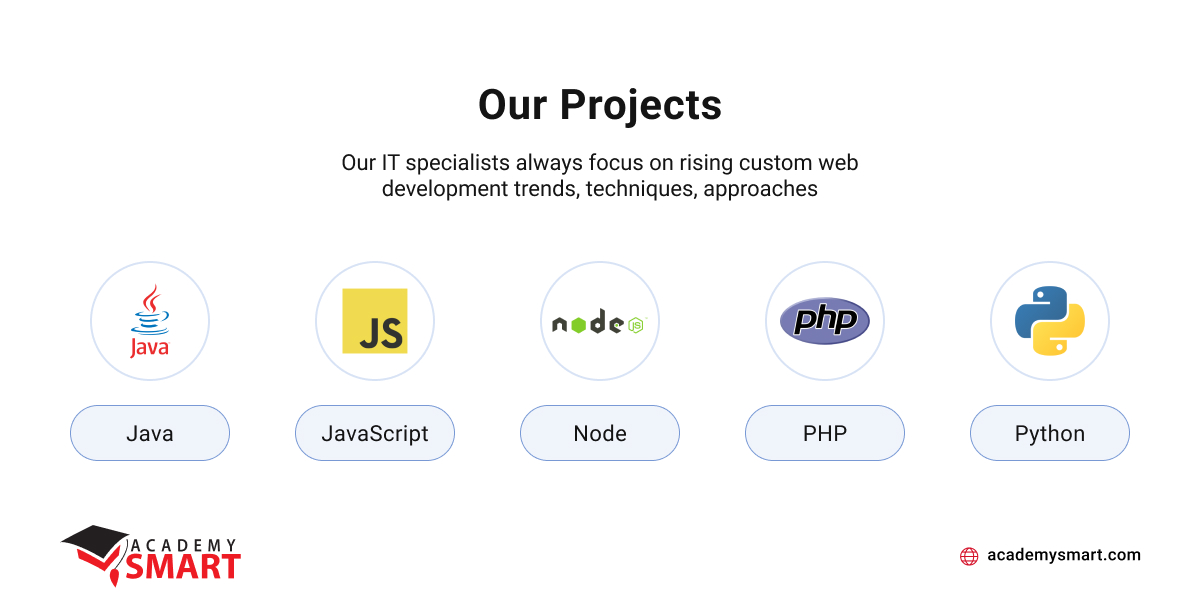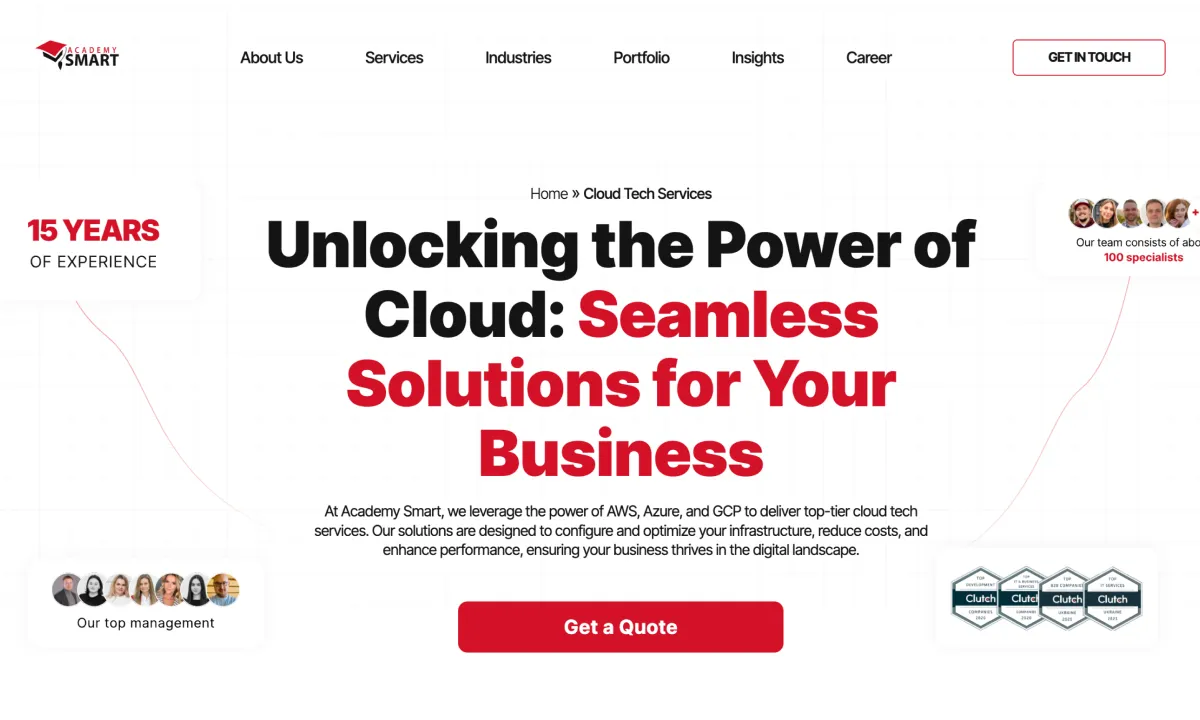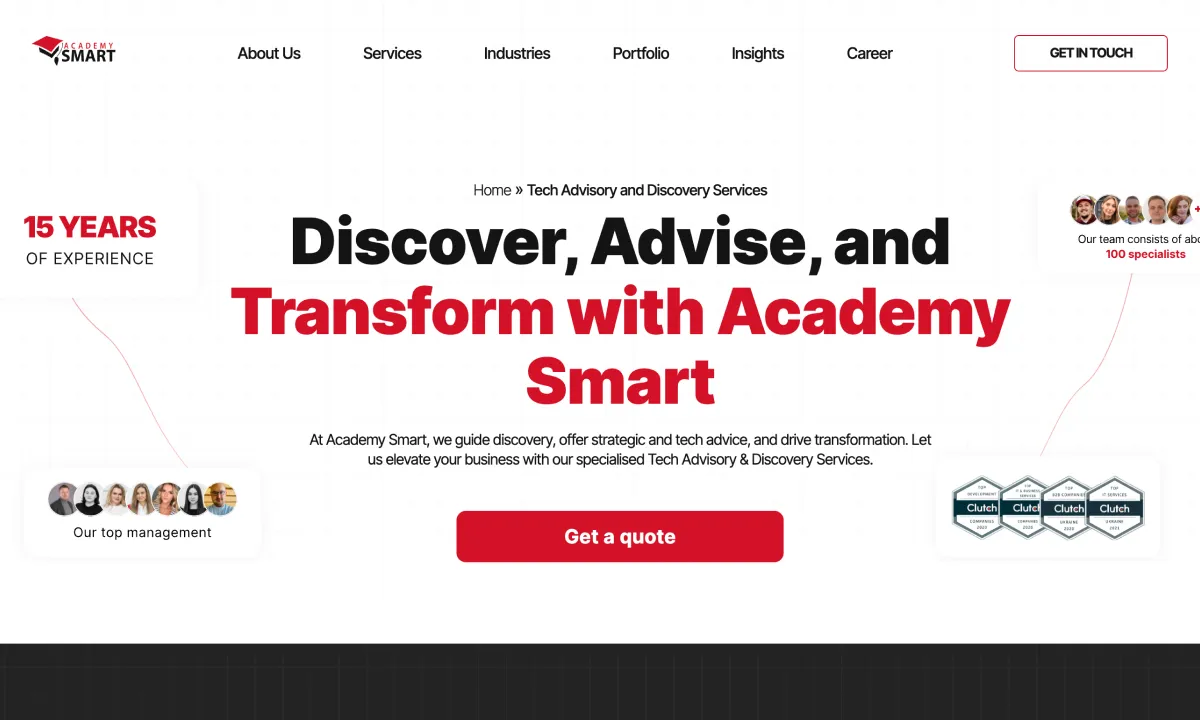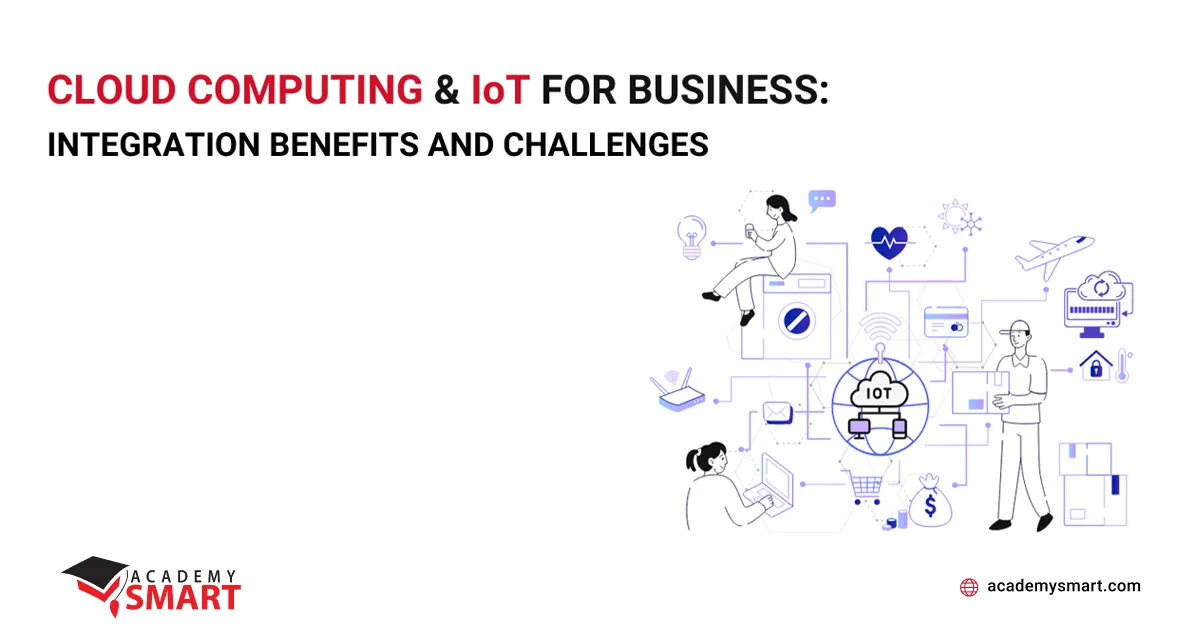
Cloud Computing and IoT for Business: Integration Benefits and Challenges
Contents
The proliferation of smart devices and Internet of Things (IoT) technologies has ushered in a new era of connectivity and data generation. While these advancements offer unprecedented opportunities to gather valuable insights, they also present a formidable challenge: the management and processing of the vast volumes of data they produce.
To address this challenge, enterprises often turn to cloud solutions, which provide scalability and the necessary computational power. However, the effective integration of cloud computing and IoT introduces intricacies. In this article, we invite you to explore the benefits and challenges that enterprises encounter in their pursuit of harmonizing these powerful technologies.
Understanding of IoT and Cloud Integration
Cloud computing utilizes remote servers hosted on the internet to store, manage, and process data rather than relying on local hardware or servers. It allows businesses to access a scalable pool of computational resources, ensuring flexibility and efficiency in managing data and applications.
On the other hand, the Internet of Things (IoT) is a network of interconnected physical devices and objects that communicate and exchange data. They can include anything from sensors in manufacturing plants to wearable health monitors, each generating a specific type and amount of data.
Integrating IoT and cloud computing as a task arises from the need to process, store, and analyze the enormous volumes of data generated by IoT devices efficiently. Cloud solutions provide the computing power, storage capacity, and accessibility required.
Typical methods of achieving this integration include using cloud platforms specifically designed for IoT applications. They offer services for device management, data processing, and analytics, making it easier for businesses to exploit IoT data effectively. Additionally, using Application Programming Interfaces (APIs) and middleware allows seamless communication between IoT devices, cloud infrastructure, and other business applications, enabling data flow and real-time decision-making.
IoT cloud platforms for business
Cloud platforms for IoT are specialized cloud-based solutions designed to enable seamless connectivity, data management, and analysis of Internet of Things components, including the processing of big data. These platforms are tailored to support businesses in unlocking the potential of IoT technologies in a fast and efficient way.
Popular IoT cloud platforms offer a range of IoT-related services, including:
- Customization
They allow companies to set up the platform to their specific needs, enabling the creation of custom IoT applications and workflows. - Device management
They provide tools for the centralized management of IoT devices, allowing them to control remotely, update firmware, and ensure security. - Data ingestion and storage
These platforms enable data ingestion from IoT devices into the cloud, providing scalable and secure storage solutions for the big amount of data generated. - Data processing and analytics
They offer services for processing and analyzing IoT data in real-time or through batch processing, extracting valuable insights and trends. They also provide tools for creating dashboards and reports to help businesses visualize IoT data and make informed decisions. - Integration capabilities
Popular IoT cloud platforms often provide APIs and connectors that simplify integration with other enterprise systems, ensuring seamless data flow and accessibility. - Scalability
These platforms are designed to handle the growing number of IoT devices and the associated data, ensuring the infrastructure can scale as the business grows. - Security
They implement robust security measures to protect IoT data, devices, and communications, helping to safeguard against data breaches and cyber threats. - Machine Learning and AI
Some platforms include machine learning and artificial intelligence capabilities to enable predictive maintenance, anomaly detection, and automation based on IoT data.
For instance, Amazon Web Services (AWS) provides several specific platforms of IoT cloud computing:
- AWS IoT Core facilitates the management of IoT devices and enables secure communication between them and the cloud. It supports MQTT and HTTPS protocols, making it suitable for many IoT applications.
- AWS IoT Greengrass extends AWS IoT Core to edge devices, allowing local data processing, messaging, and device management to reduce latency and improve responsiveness.
- AWS IoT Analytics provides tools for processing, storing, and analyzing IoT data.
Microsoft Azure, Oracle Cloud, and IBM Cloud also have options for the Internet of Things and cloud computing integration.
Cloud Computing in IoT Examples
The effective combination of IoT and cloud computing technologies today is used in a wide variety of sectors of public administration, science, and business, thereby generating demand for high-quality and functional software products that can satisfy market needs. Let’s look at practical examples:
- Remote patient monitoring in healthcare
IoT devices, like wearable health trackers, collect patient data and send it to the cloud for analysis. Healthcare providers can remotely observe patients’ health conditions and provide timely interventions. - Predictive maintenance in manufacturing
IoT sensors on factory equipment continuously transmit data to the cloud. Advanced analytics in the cloud can predict when machinery is likely to fail, allowing for maintenance before a breakdown occurs and reducing downtime and costs. - Traffic management in smart cities
IoT detectors on roads and traffic lights provide real-time traffic data to the cloud. Traffic management systems use this data to optimize traffic flow, reduce congestion, and improve urban mobility. - Precision farming in agriculture
IoT sensors in fields collect data on soil conditions, weather, and crop health. Cloud platforms analyze this data to optimize irrigation, fertilizer use, and crop management, improving yields and resource efficiency. - Inventory management in retail
Retailers use IoT devices to monitor inventory levels in real time. Data is sent to the cloud, which triggers automatic restocking orders when items are running low, reducing stockouts and overstocking. - Asset tracking in logistics
IoT appliances in shipping containers and vehicles provide real-time location and condition data. The cloud enables companies to track assets, optimize routes, and enhance supply chain visibility. - Air quality check in environmental monitoring
IoT detectors measure air consistency in urban areas and send the data to the cloud. This information is used to assess pollution levels and improve public health. - Smart grids in energy management
IoT controllers in the power grid monitor electricity usage and system health. The cloud analyzes the data to optimize energy distribution, detect faults, and improve energy efficiency. - Smart thermostats for home automation
IoT-connected climate control devices use cloud-based AI to learn user preferences and adjust heating and cooling systems for energy savings and comfort.
Academy Smart has also developed several secure integrations of IoT and cloud computing, for instance, a convenient mobile application for a healthy lifestyle.
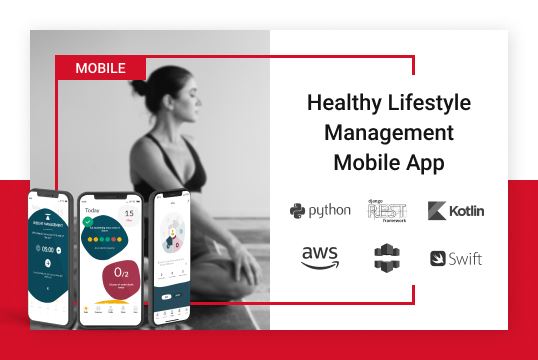
Cloud-based healthcare mobile IoT-compatible app
Benefits and Challenges to Integrate Cloud Computing with IoT
Leveraging the strengths of cloud computing in IoT holds the promise of substantial benefits for enterprises handling large data streams from diverse sources. However, integrating these open information systems into a single software solution presents a complex technical challenge, demanding a solid grasp of relevant knowledge and practical experience.
Benefits
- Cost efficiency
Businesses can reduce capital expenditures by paying for cloud resources on a pay-as-you-go basis, avoiding the high upfront costs of hardware and data centers. - Data storage and processing
The cloud provides ample storage and computing power, allowing for the efficient gathering, processing, and analysis of extensive volumes of IoT-generated data. - Remote accessibility
Cloud-based IoT solutions enable remote monitoring and management of devices and data, increasing operational efficiency. - Fast deployment
Cloud platforms often offer pre-built IoT services and tools, accelerating the development and deployment of IoT applications. - Scalability
Cloud computing can scale resources up or down as needed, accommodating the growth of IoT device deployments without overinvesting in infrastructure.
Challenges
- Interoperability
Ensuring seamless communication between IoT devices and cloud platforms can be challenging, as different devices may use other protocols. - Latency
Cloud-based processing can introduce latency, which may be unacceptable for real-time applications like autonomous vehicles or industrial automation. - Data security
Storing sensitive IoT data in the cloud raises concerns about data breaches and unauthorized access, requiring robust security measures. - Data privacy
Compliance with data privacy regulations, especially when dealing with personal data from IoT devices, can be complex and demanding. - Reliability and downtime
Dependence on cloud services means that downtime or outages in the cloud infrastructure can disrupt IoT operations. - Cost management
While the pay-as-you-go model is cost-efficient, it requires careful monitoring to prevent unexpected costs from excessive resource usage.
These benefits and challenges should be carefully considered when integrating cloud computing with IoT, as they have a significant impact on the effectiveness and sustainability of business software applications. However, it is better to entrust technical issues to an experienced cloud app development team.
Implement Cloud Computing for IoT Apps with Academy Smart
Academy Smart is a team of highly skilled professionals in IoT device engineering, AWS cloud architecture, API integration, and security. Whether you seek to augment your existing workforce with qualified IT experts or assemble a dedicated development team for your enterprise app project, we have the resources and mastery to fulfill your requirements. Contact us today to infuse essential expertise into your IT projects.
Frequently Asked Questions: Cloud Computing and Internet of Things
What is the difference between cloud computing and IoT?
Cloud computing refers to delivering services over the Internet, while the IoT is a network of interconnected devices that communicate and share data through the Web.
What are the skills needed to implement cloud computing and IoT solutions?
- programming and scripting;
- cloud architecture;
- IoT device engineering;
- API integration;
- security and domain-specific compliance.
Book a free consultation

Reach out to start talking today!

